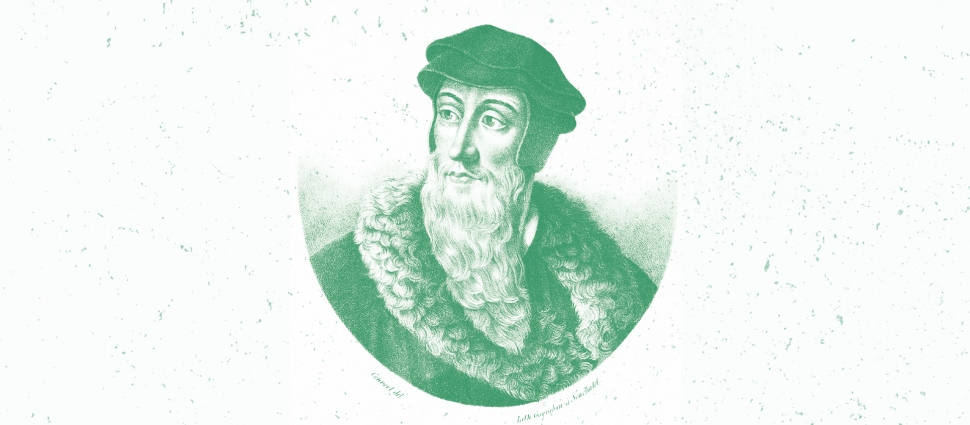Blog 223: 4.17.16 - 4.17.20

Transubstantiation and consubstantiation equally infer the ubiquity of Christ's physical body, a matter which Calvin now begins to address. The notion that Christ's physical body (in Bethlehem's manger, on the cross, resurrected in walking along the Galilean shore) is in every place at the same time implies that what was (is) seen is a phantasm. With a double edged sword, Calvin suggests this is "raise Marcion from hell") - since the second-century heretic had advocated such a view and been condemned as a heretic in Roman Catholic tradition. And, engaging in some subtleties of his own, Calvin asks what the implication might be of wine and bread (separated on a table) if Christ' body is attached to both? Absurd? Yes.
Summarily dismissing these ideas, Calvin now reaches eloquence itself. In the Supper, we must equally ascribe to him those properties which belong to both his divine and human natures. Thus, Calvin comes to address what "is" means in the formula, "This is my body... This is my blood." Unless we abandon all sense, these words must be understood as employing a figure (metonymy) of speech - the one representing (covenantally) the other. Their effectiveness is to faith: "a covenant ... would not benefit us unless there were joined to it that secret communication by which we are joined to Christ" (Institutes 4.17.20). To the one who has faith, the bread and wine - by the Spirit's secret (hidden, mysterious) power - draw us to commune with the enfleshed Christ in heaven.
And Calvin has only just begun his own distinctive explanation of the Supper.




